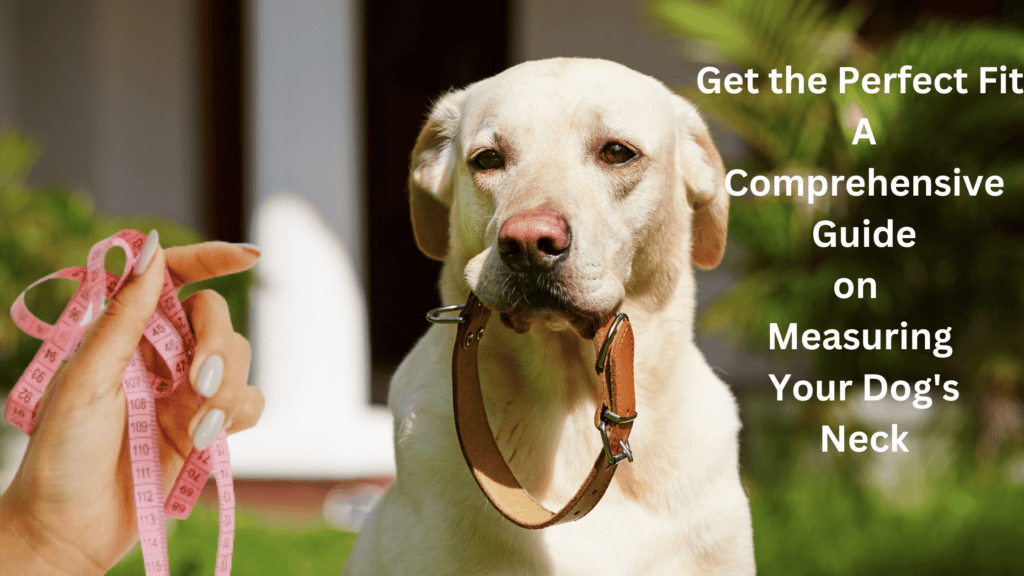
How Many Inches is a Large Dog Collar?
We dog owners always want to ensure our furry friends are comfortable and safe. One of the essential items that every dog needs is a collar. However, choosing the right size can be challenging, especially if you’re a first-time dog owner. In this article, we’ll discuss how many inches is a large dog collar? and provide a complete guide with a chart to help you make the right decision.
By following these guidelines, you’ll be equipped with the knowledge to choose the ideal collar size for your canine companion. Say goodbye to ill-fitting collars, and hello to a perfect fit!
Large Dog Collar Size Inches- Chart
We’ve provided a sizing chart below to make determining the right size for your large dog easier.
| Dog Neck Size | Collar Size |
|---|---|
| 18-20 inches | Large |
| 20-22 inches | Extra Large |
| 22-24 inches | XX-Large |
| 24-26 inches | XXX-Large |
| 26-28 inches | XXXX-Large |
How to Measure the size of a Dog Collar? In 5 Steps
To determine the ideal collar size for your dog, you’ll need to measure its neck accurately. Follow these simple steps:
- Step 1. Gather the Necessary Tools:
- Before measuring, ensure you have a flexible measuring tape or a piece of string and a ruler. These tools will help you get accurate measurements.
- Step 2. Positioning Your Dog: Find a quiet area where your dog feels comfortable and relaxed. Ensure your dog is standing or sitting in a natural position, with their head up and neck extended.
- Step 3. Measure the Neck Circumference:
- 1. Place the measuring tape or string around the base of your dog’s neck, where the collar would naturally rest.
- 2. Ensure it is snug, but not too tight.
- 3. If you’re using a string, mark where it overlaps and then measure the length with a ruler.
- Step 4. Record the Measurement: Note the measurement in inches or centimeters, depending on your preference. Remember to record the measurement accurately; even a slight variation can affect the collar fit.
- Step 5, Consider the Breed and Fur: Different dog breeds have varying neck sizes. Consider your dog’s fur length and thickness. Dogs with thick fur may require a slightly larger collar to accommodate their fluff.
How to Choose the Right Size for Large Dogs?
Regarding large dogs, the collar size can vary significantly depending on the breed and individual dog. A large dog, such as a Great Dane, will need a larger collar than a medium-sized breed, such as a Beagle.
Generally, large dog collars start at around 18 inches and can go up to 28 inches or more. However, it’s essential to measure your dog’s neck and refer to the sizing chart provided by the manufacturer to ensure a proper fit.
Factors to Consider When Choosing a Large Dog Collar
When selecting a collar for your large dog, there are several factors to consider. These include the width of the collar, the material it’s made of, and the type of closure.
- Width
- The width of the collar is important as it affects your dog’s comfort. A wider collar can distribute pressure more evenly, making it more comfortable for your dog to wear. However, it’s essential to ensure the collar is not too wide, as it can be cumbersome.
- Material
- The material of the collar is also an essential factor to consider. Collars can be made of various materials, such as leather, nylon, and neoprene. Each material has advantages and disadvantages, so choosing one that suits your dog’s needs is important.
- Closure
- The closure of the collar is another crucial factor to consider. The most common types of closures are buckles, snap closures, and martingale closures. Buckles are the most secure but can be challenging to put on and take off. Snap closures are more convenient but can be less secure, while martingale closures are a combination of the two.
Types of Large Dog Collars
There are different types of dog collars available for large dogs. These include:
- Flat Collars: These are the most common type of dog collars. They are simple, lightweight, and suitable for everyday use.
- Martingale Collars: Also known as greyhound collars, they are designed to prevent dogs from slipping out of their collars. They suit dogs with narrow heads and necks, such as greyhounds and whippets.
- Choke Chain Collars: Choke chain collars are not recommended for most dogs, as they can cause injury and discomfort. They are only suitable for dogs undergoing obedience training.
- Prong Collars: Prong collars are also known as pinch collars. They have metal prongs that dig into the dog’s neck when pulled, causing discomfort. They are not recommended for most dogs and should only be used under the guidance of a professional dog trainer.
Conclusion
In conclusion, choosing the right size collar for your large dog is essential for their comfort and safety. By using the information provided in this article and referring to the sizing chart; you’ll be able to find the perfect collar for your furry friend.
